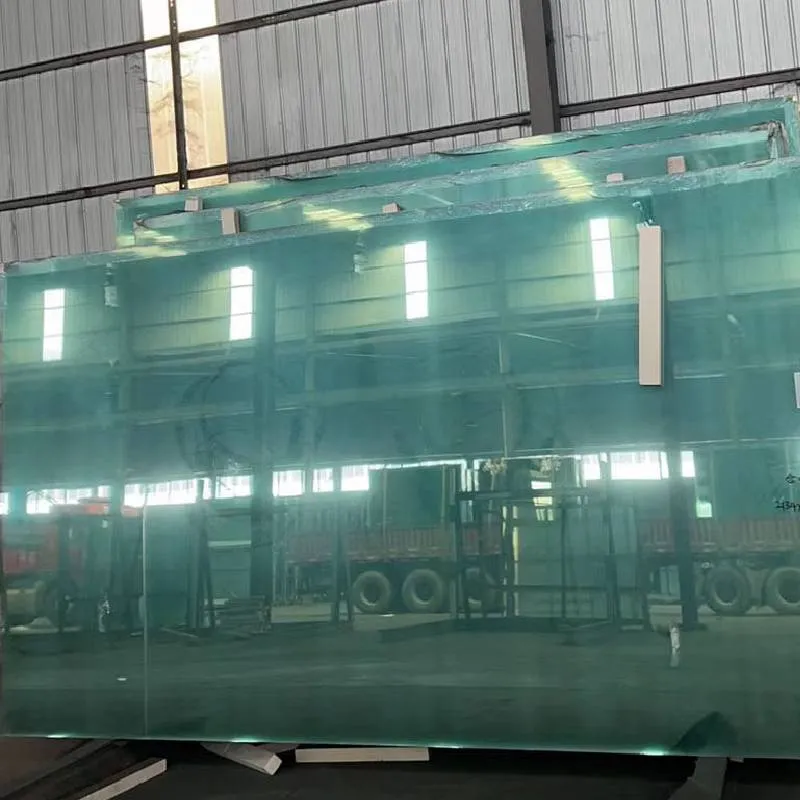Understanding Low Iron Tempered Glass Pricing
Low iron tempered glass, often regarded as the premium choice in the market for glass products, offers unparalleled clarity and aesthetic appeal compared to regular glass. Its unique properties make it a favored material in various applications, including architecture, automotive, and decorative designs. However, when considering a purchase, customers frequently want to know about the pricing dynamics of low iron tempered glass. This article delves into the factors that influence its cost and provides insights into making informed purchasing decisions.
What is Low Iron Tempered Glass?
Low iron tempered glass is produced by refining raw materials to minimize the iron content, resulting in a clearer and more transparent product. The reduction of iron enhances light transmission, allowing up to 91% of visible light to pass through, which is significantly higher than that of standard glass. This quality makes it particularly appealing for large facades, glass railings, shower enclosures, and other applications where visibility and aesthetics are critical.
Furthermore, tempering the glass increases its strength, making it more resistant to thermal stress and impact. Tempered glass can be up to five times stronger than standard glass, allowing it to withstand tough conditions. These characteristics come at a price, and understanding the factors that contribute to this cost is essential for consumers.
Factors Affecting the Price of Low Iron Tempered Glass
1. Raw Material Quality The cost of manufacturing low iron tempered glass begins with the raw materials used. High-quality silica sand with minimal impurities is essential for producing low iron glass. The sourcing of these materials, their quality, and the processing methods will influence the overall price.
2. Manufacturing Process The production of low iron tempered glass is more complex and requires advanced technology compared to regular glass. The tempering process, which involves heating and cooling the glass to increase its strength, adds to the manufacturing costs. Facilities equipped with state-of-the-art technology will charge more for the enhanced efficiency and quality assurance.
low iron tempered glass price
3. Thickness and Size Customization plays a significant role in pricing. The thickness of the glass can range from 2mm to over 19mm, depending on the application requirements. Thicker glass typically costs more due to the additional material and the more energy-intensive production processes. Additionally, larger panels of glass often come with higher shipping costs due to their size and weight.
4. Finishes and Coatings Clients may choose various finishes or coatings for their low iron tempered glass to enhance aesthetics or functionality. These can include polished edges, frosted surfaces, or specialized coatings for UV resistance or energy efficiency. Each of these options can affect the price, as they require specific treatments during the manufacturing process.
5. Market Demand and Supply The general market conditions also play a significant role in pricing. High demand for low iron tempered glass in architectural projects, increasing construction activities, or trends favoring large glass installations can drive prices higher. Conversely, market saturation and reduced demand may result in competitive pricing.
6. Shipping and Handling Given the fragile nature of glass, shipping and handling costs can be substantial. Protective packaging, freight insurance, and transportation logistics can add to the overall price. Companies often factor these costs into their pricing structures.
7. Geographical Factors Pricing may also vary based on geographical location. Regions with higher labor costs, transportation expenses, or taxes may see increased prices. Similarly, proximity to manufacturers can affect shipping costs and availability.
Conclusion
When considering purchasing low iron tempered glass, it's crucial to understand the various factors that affect its pricing. While the initial cost may seem high, the long-term benefits in terms of strength, clarity, and aesthetic appeal often outweigh the upfront investment. It’s advisable for consumers to obtain quotes from multiple suppliers, compare quality, and consider the long-term value of their investment.
In conclusion, low iron tempered glass is an excellent choice for those looking to enhance the beauty and durability of their projects. By understanding the factors impacting pricing, consumers can make informed decisions that align with their budget and project requirements. Whether for residential or commercial use, investing in this high-quality material can lead to impressive results that stand the test of time.
 Afrikaans
Afrikaans  Albanian
Albanian  Amharic
Amharic  Arabic
Arabic  Armenian
Armenian  Azerbaijani
Azerbaijani  Basque
Basque  Belarusian
Belarusian  Bengali
Bengali  Bosnian
Bosnian  Bulgarian
Bulgarian  Catalan
Catalan  Cebuano
Cebuano  Corsican
Corsican  Croatian
Croatian  Czech
Czech  Danish
Danish  Dutch
Dutch  English
English  Esperanto
Esperanto  Estonian
Estonian  Finnish
Finnish  French
French  Frisian
Frisian  Galician
Galician  Georgian
Georgian  German
German  Greek
Greek  Gujarati
Gujarati  Haitian Creole
Haitian Creole  hausa
hausa  hawaiian
hawaiian  Hebrew
Hebrew  Hindi
Hindi  Miao
Miao  Hungarian
Hungarian  Icelandic
Icelandic  igbo
igbo  Indonesian
Indonesian  irish
irish  Italian
Italian  Japanese
Japanese  Javanese
Javanese  Kannada
Kannada  kazakh
kazakh  Khmer
Khmer  Rwandese
Rwandese  Korean
Korean  Kurdish
Kurdish  Kyrgyz
Kyrgyz  Lao
Lao  Latin
Latin  Latvian
Latvian  Lithuanian
Lithuanian  Luxembourgish
Luxembourgish  Macedonian
Macedonian  Malgashi
Malgashi  Malay
Malay  Malayalam
Malayalam  Maltese
Maltese  Maori
Maori  Marathi
Marathi  Mongolian
Mongolian  Myanmar
Myanmar  Nepali
Nepali  Norwegian
Norwegian  Norwegian
Norwegian  Occitan
Occitan  Pashto
Pashto  Persian
Persian  Polish
Polish  Portuguese
Portuguese  Punjabi
Punjabi  Romanian
Romanian  Russian
Russian  Samoan
Samoan  Scottish Gaelic
Scottish Gaelic  Serbian
Serbian  Sesotho
Sesotho  Shona
Shona  Sindhi
Sindhi  Sinhala
Sinhala  Slovak
Slovak  Slovenian
Slovenian  Somali
Somali  Spanish
Spanish  Sundanese
Sundanese  Swahili
Swahili  Swedish
Swedish  Tagalog
Tagalog  Tajik
Tajik  Tamil
Tamil  Tatar
Tatar  Telugu
Telugu  Thai
Thai  Turkish
Turkish  Turkmen
Turkmen  Ukrainian
Ukrainian  Urdu
Urdu  Uighur
Uighur  Uzbek
Uzbek  Vietnamese
Vietnamese  Welsh
Welsh  Bantu
Bantu  Yiddish
Yiddish  Yoruba
Yoruba  Zulu
Zulu 

